| Author | Message | ||
| gtrguy
Senior Member Username: gtrguy Post Number: 934 Registered: 9-2004 |
I personally think that a short scale bass is inherently a worse sounding bass, but that with the Alembic series electronics, they manage to 'overcome' that. I have owned short scale vintage Gibson basses and did not care for the tone much. I have also played several short scale Fenders and did not like them. Of course, the vintage Fenders were considered more 'student models' back in the day. I am curious on what others think... I love the Alembic short scale series basses and think they gig well. They are so easy to play! I pretty much set the controls one way when gigging, after dialing in a good tone for the venue. Of course, I also think that a 85 pound Ampeg Classic tube bass amp could probably 'overcome' many tone weaknesses in a bass too, but my back says �no dice.� | ||
| rustyg61
Senior Member Username: rustyg61 Post Number: 1740 Registered: 2-2011 |
Being the owner of both a 34" Series II & a short scale SCSD with Signature Electronics, I have to say they both sound AMAZING! Each has their own unique sound, but both are unmistakably Alembic. The SCSD is so fun to play! After playing the long scale, it feels like a toy, but in mean that in a good way! It's like driving a small sports car after cruising in a Cadillac! The Series II definitely has more bottom end than the SCSD, but the SCSD has more bottom end than my '63 reissue Fender Jazz, so it is not lacking in bottom at all. I was afraid I might not want to play my SCSD after getting the Series II, but that is not the case. My S II is my main bass now, but I really look forward to the songs I play the SCSD on at our gigs. It's a nice change. | ||
| hieronymous
Senior Member Username: hieronymous Post Number: 1590 Registered: 1-2005 |
I love my early-'70s Gibson Triumph bass with flats for an old-school sound: https://www.youtube.com/watch?v=9ti2RRVm44U I do think that there is something special about regular 34" scale basses - nothing like hammering away on a P-Bass or Rickenbacker with a pick and roundwounds! | ||
| hammer
Senior Member Username: hammer Post Number: 767 Registered: 9-2009 |
Different maybe...worse in no way! I have also owned short scale Gibson basses (I still own one because we play a few Cream tunes and my Alembics just won't making farting sounds) and from what I have learned its not the scale but the quality of the bass. I currently own a short scale SC, a medium scale Signature custom, and a long scale Europa. Although they all have they own personal characteristics, I certainly wouldn't say that the sort scale is inferior to the others, just different. | ||
| edwin
Senior Member Username: edwin Post Number: 2124 Registered: 5-2002 |
My Starfire (with Alembic guts, of course) is my #1 bass. I love short scale. In no way is it inherently worse. I would suggest that basing that idea on your experience on Gibsons and Fenders would lead to such a conclusion, though. | ||
| keith_h
Senior Member Username: keith_h Post Number: 2301 Registered: 2-2005 |
My main basses for the past 10+ years have been short scale small standard bodies. My Hagstrom 8 is also a short scale. I've never had any issues with bass on any of them. For the Alembics I stick with the string gauges they came with. For the Hagstrom the sets I use have 45-100 for the low octave. I think sometimes problems come from trying to use to light of a string. On a short scale you don't need a super light string to get a good feel so requires a shift in thought from a long scale bass. Keith | ||
| rv_bass
Junior Username: rv_bass Post Number: 13 Registered: 8-2014 |
I have a Starfire short scale and Orion 34" scale. They are two very different sounding basses, but both sound great. I use them for different situations as needed. I prefer the short scale. I find it easier and more comfortable to play, especially in the upper registers (due to neck angle and positioning) and lower registers (1st through 3rd position) due to spacing, and my short scale Starfire is in no way lacking in low end. | ||
| cozmik_cowboy
Senior Member Username: cozmik_cowboy Post Number: 1957 Registered: 10-2006 |
Yes, a Mustang is a perhaps a tad lacking, and a stock EB-0 sounds like farting into a pillow. Phil's "pre-Alembicized" EB-0 with Bi-Sonics, etc., however, produced the "Mamma Tried" on Skullf**k, which is the best bass tone ever recorded. Edwin's Starfire sounds like godsex. It ain't the scale that's the problem........ Peter | ||
| ed_zeppelin
Intermediate Member Username: ed_zeppelin Post Number: 134 Registered: 2-2010 |
I found out only recently that Guild used Hagstrom pickups in a lot of their basses (including Phil's and Jack Cassidy's, before Wickershams were unleashed on them). Note the picture of Phil with his original - pre-Alembicized - Starfire (and "get a haircut, hippie" hairstyle), with pickups and bridge by Hagstrom: http://www.vintageguitarandbass.com/guild/bass/Starfire.php Note the similarities - and one glaring difference - with Hagstrom's own version (that I would kill to play): http://www.vintageguitarandbass.com/hagstrom/bass/Concord.php Hagstroms just knock me out. I can recall the exact details of every one I've ever worked on, because it's such a thrill to pop open a case and see a Hagstrom, especially if they've got that mother-of-toilet-seat vibe going on. 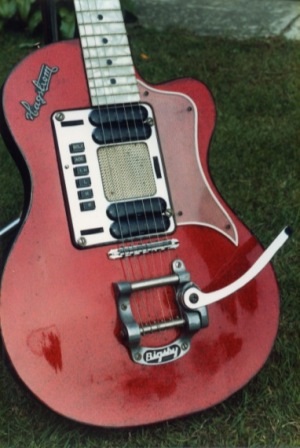 One particularly strange one had switches instead of knobs, 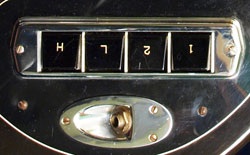 and the volume control was a slider that followed the contour of the pickguard. When I took the pickguard off, there was a length of copper foil flush-mounted to the body just inside the boundary of the pickguard, with some kind of stuff "half-silvered" onto it (graphite paint or something) so that one end of the copper strip was completely covered and gradually faded to nothing at the other end. Who thinks like that? (Same principle as a Morley pedal, except instead of direct electrical contact, the Morley does it with light on a "half-silvered" card that is completely opaque at one end and reflective at the other.) I edited this paragraph out, but now that it looks like this damn post turned into a novel anyway, I'll stick it back in. The technique of "half-silvering" comes from a magic technique invented by Robert Houdin (from *who "Houdini" derived the name) so astoundingly popular that he became the most famous magician in the world, mostly based on this trick. This trick stopped a war - between Arabs - true story: http://magic.about.com/od/magichistory/a/rhoudin.htm A pretty girl became first a corpse, then a skeleton and finally a ghost - in full view of the audience the whole time - over the course of HOURS. The young woman was on the side of the stage, facing center. The stage backdrop was black velvet, designed to suck up light. The key to the trick is a long pane of half-silvered glass, in which one end is completely silvered (a mirror, in other words) and the other end is clear, with an incredibly fine transition along the way. The pane crossed center stage at a precise angle so that the mirror reflected the (well-lit) subject in the wings, and as the glass was moved forward and backward on that plane, she would gradually disappear, quickly change costumes and gradually reappear at center stage. Remember that the trick was done in lantern light. Okay, back to Hagstroms. Hagstrom manufactured accordians in Sweden since 1925 (please don't hold it against them) and invented their own pickup system for electric accordions when everybody else (I.e. Americans and Italians) were either working with microphones or John Hammond's organ innovations. So Hagstrom created the best accordion pickup in the world at the time, in between chasing reindeer and blondes or whatever they did during those long, cold winters. 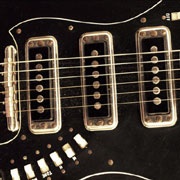 When the market for flashy Swedish accordions collapsed (who could have seen that comin'?) Hagstrom began making their own guitars, and supplied parts to other manufacturers. Here's a picture of Jimi Hendrix playing a Hagstrom 8-string bass (I believe it's strung right-handed, because he could play either way, but no way of telling). Hendrix fans note he recorded a number of songs with this bass. I had a list somewhere ...  Ampeg AES-1 (and very cool lid) on the left. The other is a mystery. Hagstrom made a lot of hardware for other companies, particularly Guild, but also Burns, Selmer, Goya, Gretsch and Baldwin (Willie Nelson's famous guitar "Trigger" has a Baldwin pickup, made by Hagstrom). The Burns "Bison" guitar isn't called that because of the horns, but because originally he used Hagstrom "bisonic" pickups. In fact, considering the topic, here is Burns' first guitar, a short-scale "Jazz" guitar with single coil pickups of unknown provenance, since Burns didn't start making their own pickups until later, I believe.  Okay, we did Starfires, a nice rant about those wacky Scandinavians at Hagstrom, Jimi, Willie, mother-of-toilet-seat, magic tricks ... I'm done. * "I am convinced that the word 'whom' is a plot to make us sound like English butlers." - Mark Twain | ||
| bassilisk
Intermediate Member Username: bassilisk Post Number: 134 Registered: 4-2009 |
To the OP, I like playing short scale basses. I had an EB3 which was fun, but yes the sound was really limited due to the pickups. I also had a LP Triumph - much better tone. Leave it to Les to come up with passive low-impedance pickups. I finally got a chance to try a SC with Signature guts and I nearly laughed out loud when I grabbed the neck. Even after playing tiny Hagstrom necks this was much less than I could cope with. I would have to live with it for weeks and change my playing style to accommodate that tiny thing. I'm sure it sounded amazing, but there was much less meat than I could navigate. If Mr Clarke's was anything remotely similar to this, then I am ever more blown away by what he was able to do... These are my personal observations. Having said that, there are short scale basses that get it done. Never tried/heard one but Birdsong is highly regarded for excellent quality short scales. As to Hagstroms, I am lucky enough to own an early 60's Coronado IV loaded with original Bisonics and complete with push buttons and a semi-circular volume lever protected by the "towel rack". It's 34" scale, very easy to play but pretty hefty to wear. And these pickups do sound awesome.  | ||
| ed_zeppelin
Intermediate Member Username: ed_zeppelin Post Number: 135 Registered: 2-2010 |
Hate to "hog the thread" (if it ain't way too late for that), but when I was looking at the pic of Phil playing the original Starfire: http://www.vintageguitarandbass.com/guild/bass/Starfire.php I noticed on the right side of that page a time-line of "improvements" Guild made to the Starfires after numbers one and two (I think) were Alembicized. Note the "larger headstock." Ha ha, I've never noticed that. Now what does that look like to you? 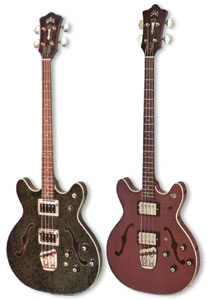 (They missed the opportunity for dummy "dummy" pickups, as far as I'm concerned.) It would be interesting for word to come down from on high about this vital matter. That's pretty much everything I know about Guild, but what would it be like to rip them babies out of there and install a QUADROPHONIC system (through f-holes, no less!) One thing about that era in Guitarmaking: Everybody stole from everybody else, with the notable exceptions of Hagstrom, Rickenbacker and Alembic. I'm sort of in awe of Hagstroms, but in the same way I like shirts that come with a volume control, Jerry Garcia ties and stuff like this: 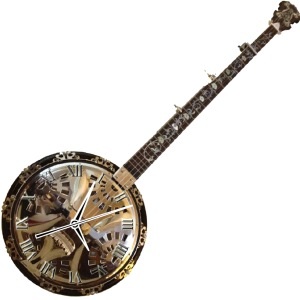 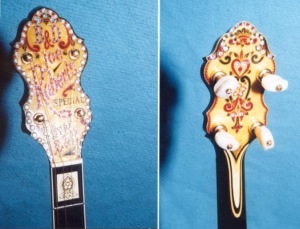 It would be interesting to get the "real dirt" from the Wickershams (I can see why they avoid f-holes, that's for sure). | ||
| ed_zeppelin
Intermediate Member Username: ed_zeppelin Post Number: 136 Registered: 2-2010 |
Hey, that's it! Well, almost. I remembered the buttons (I even included a pic of those accordion-style buttons), but the volume slider was exactly like that one, but lower, on the edge of the pickguard. No towel bar that I remember, but it was like opening a guitar case and pulling out something The Jetsons would have rocked out on. I think the one I ran into was transitional period thing. Like Hagstrom had an "idea of the week" contest, and somewhere in there they went from switches, sliders and accordion buttons to Gibson style pots, pickups etc. Makes you want to take off that pickguard and see what's under there, don't it? Ha ha, here I am on Alembic's site, absolutely lusting after a Swedish hybrid between a bass and a jukebox. I need to go listen to ABBA just to shake the jitters. Can you hear the drums, Fernando? | ||
| benson_murrensun
Senior Member Username: benson_murrensun Post Number: 642 Registered: 5-2007 |
I've played only 34" and 35" scale basses, so that's what I am used to. My wife began playing bass about 6 years ago; she's 5'4" and has small hands. Once she tried short-scale basses it was all over; she won't play anything else. Noting that Alembics are usually fairly heavy, she has found Birdsong basses to be everything she prefers. IMHO short-scale basses are not inherently inferior, sound wise. Sometimes they sound "bigger" and fuller than longer scale basses. | ||
| 811952
Senior Member Username: 811952 Post Number: 2402 Registered: 10-2003 |
ESP and Ibanez build some exceptional shorter-than-short-scale basses. I think they're 28" scale, and I've been tempted to pick one up. They sound great, imho. John | ||
| bassilisk
Intermediate Member Username: bassilisk Post Number: 135 Registered: 4-2009 |
ed zeppelin - I've been under that guard. Everything is mounted to it in typical Hagstrom fashion. The push buttons have mechanical linkages to the electronic connections. They are some serious analog solutions and quite elegant in their way. | ||
| hieronymous
Senior Member Username: hieronymous Post Number: 1592 Registered: 1-2005 |
I posted another track with my Les Paul Triumph - just audio - flat wound strings played with a pick, kind of overdriving my CAJ tube compressor and then beefed up with F-2B after the fact: https://soundcloud.com/stanleylighthead/jan-jan | ||
| ed_zeppelin
Intermediate Member Username: ed_zeppelin Post Number: 144 Registered: 2-2010 |
Here's Tina Weymouth (bassist for Talking Heads and Tom Tom Club) take on basses, short-scale and otherwise; ""I've come full circle," Tina Weymouth says of her decision to strap on once again the single-cutaway, two-pickup Hofner hollowbody she's had for her whole career. (Her original was stolen in '78, but a sympathetic fan sold her another shortly after.) "It's really light, it has a little neck, and it's hard for some engineers to handle--but it's funky as all get out." In addition to the Hofner, Tina's bass stockpile has included (roughly in this order) a '70s sunburst Fender Precision, now on display at the Rock & Roll Hall of Fame; a competition-striped Fender Mustang; a Gibson Triumph; a Fender Musicmaster; a custom-made Veillette-Citron Standard 4-string; a Steinberger; and a '63 Fender Jazz. "Early on, I experimented a lot with short-scale basses other than my Hofner," she recalls. "They helped me to get my confidence up--so they were useful for a while--but I could never get the sound I wanted. It certainly didn't matter onstage, because you probably couldn't hear me anyway. But they definitely do not sound as good." (Excellent interview, by the way) https://web.archive.org/web/20081206031839/http://www.bassplayer.com/article/tina-weymouth/mar-97/5958 | ||
| gtrguy
Senior Member Username: gtrguy Post Number: 938 Registered: 9-2004 |
Yeah, I remember her on the Veillette-Citron and the keyboard bass (Rhodes?). She is a great player. | ||
| murray
Advanced Member Username: murray Post Number: 224 Registered: 7-2007 |
I have short and long scale Fender Electro Acoustic Bass guitars and like them both. For travelling and transporting around festivals, the short scale is easier. As to sound, I agree with the 'tone is in your fingers' from another thread and haven't noticed any particular shortcomings on the short scale. My Alembic Orion and Jaydee are both long scale so don't really come in to the topic. Glynn | ||
| ed_zeppelin
Intermediate Member Username: ed_zeppelin Post Number: 145 Registered: 2-2010 |
Frankly, until this thread I never really thought about short scale vs. long scale BASS, because if you fix guitars that discussion is invariably confined to guitars (Strat vs. Les Paul, mainly) and I dropped out of that conversation long, long ago. (Jeff Beck's "Blow By Blow" as I recall. Strats won, I think.)  This dumbfounds me, because I've "played" many, many basses in repairing or setting up trade-ins and store stock, and I don't think I ever gave it a second's thought. Either I'm totally brainless (lots of evidence for that conclusion) or the issue got sidelined somehow over the decades. I firmly believe that you can only evaluate a guitar with a band. Twiddle with all the knobs you want, but you won't REALLY know what that sucker sounds like until you're chugging along as part of a unit. With bass, it's even easier. All you need is a drummer, because you won't have a clue about what your bass actually sounds like until you're smackin' the CRAP out of the 1 with drums, because they just suck up all the 250 - 400 MHz around. Ive been thinking about it (uh oh), and I think Paul McCartney and Tina Weymouth made indelible basslines in the ears of a whole generation with Hofner hollowbodies. Ask anybody, even if they've never held a bass in their life, and they can probably hear the bass parts of "A Day In The Life" or "Yellow Submarine" in their head, or "Burning Down The House" and "Once In A Lifetime" (which is only TWO NOTES). Paul wasn't even the bassist in the Beatles until just before they became the biggest band in the world. The Beatles' bassist, Stu Sutcliffe, left the group in 1961: 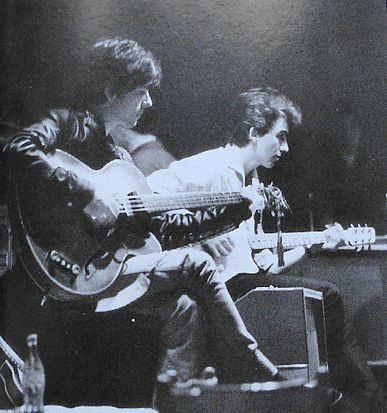 ...six months before the Beatles' first recordings with George Martin. (Decca rejected the Beatles, with the comment; "guitar groups are on the way out, Mr. Epstein.") Stu loaned the Hofner bass (pictured) to Paul, on the stipulation that he wouldn't change the strings around, so Paul figured out the bass parts - upside down and backwards - until he bought his famous Hofner 500/1 (left handed, short scale) bass, just before the recording sessions. Tina Weymouth was the drummer's girlfriend, who had never touched a bass in her life until the band pressed her into service; "until we can find a REAL bass player." Originally she played a Hofner 500/2 because it was cheap and small... 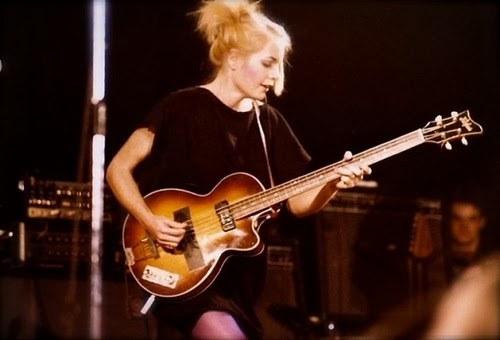 ...but throughout Talking Heads and Tom Tom Club she's used whatever bass (and scale) suited the song. My kinda bass player. She uses a pick or her fingers (later she incorporated fingerpicking with her thumb and two fingers) and has a horrendous "baseball bat grip," but she's one of my very favorite bassists. Whatever she's doing - and whatever she's doing it ON - it works. Here she is with the Hofner 500/2 (and Adrian Belew of King Crimson and Zappa on guitar) in 1980: http://youtu.be/B-_PC6TlIhs | ||
| kez
Junior Username: kez Post Number: 20 Registered: 9-2015 |
Tina Weymouth Talking Heads - Psycho Killer Isolated Bass Track for anyone interested - https://www.youtube.com/watch?v=5KWzX7OaXx0 | ||
| peoplechipper
Senior Member Username: peoplechipper Post Number: 640 Registered: 2-2009 |
I prefer the 32" scale of my Distillate as I have broken bones in both hands (snowboarding and mtn biking) so the left especially does not stretch so well, basically missing a knuckle on that hand the bone's so shortened...I used to have a Fender Musicmaster but it sucked...it played okay, but the tone was poop; I found out why; the pickup was a guitar pickup with 6 polepieces covered up with a smooth cover...no attempt to make it sound good...anyway, scale does matter a bit but it's more how the bass is put together; those Hofners would sound plunky no matter the scale...Tony | ||
| peoplechipper
Senior Member Username: peoplechipper Post Number: 641 Registered: 2-2009 |
Tina Weymouth!!! my lord, I just listened to most of the posted show, and I had NO IDEA that she was so integral to the Talking Heads actually WORKING before; she was the glue, and she is awesome!...crazy I never really noticed before, but I haven't listened to Talking Heads in some years... | ||
| 811952
Senior Member Username: 811952 Post Number: 2404 Registered: 10-2003 |
Intro and bass solo on short-scale Fender Bass VI: https://youtu.be/rjzTNWWO7U0 John | ||
| gtrguy
Senior Member Username: gtrguy Post Number: 944 Registered: 9-2004 |
Nice song! I still miss the Ovation 12 string though. Is that a bass or a baritone guitar? | ||
| 811952
Senior Member Username: 811952 Post Number: 2405 Registered: 10-2003 |
It's a bass. Tuned a full octave below a guitar, and I think something like a 28" scale. I believe he used Carole Kaye's instrument for the recording. John | ||
| hieronymous
Senior Member Username: hieronymous Post Number: 1594 Registered: 1-2005 |
The Fender Bass VI is 30" scale - the bottom four strings are the same as a standard bass guitar, with two higher strings, so it can be played as a "baritone" but covers the full range of the standard 4-string bass. | ||
| bassilisk
Intermediate Member Username: bassilisk Post Number: 136 Registered: 4-2009 |
Jack Bruce used a Fender Bass VI on their debut album Fresh Cream (1966) and used it from time to time afterwards. This is a shot of him on TV in 1968. 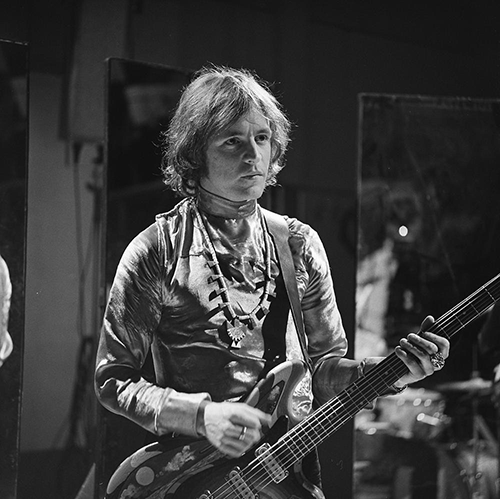 | ||
| hieronymous
Senior Member Username: hieronymous Post Number: 1595 Registered: 1-2005 |
One of my favorite Bass VI players is Roy Babbington, who joined the Soft Machine after Hugh Hopper left. He plays it like a regular bass, with fingers, gets a great fat sound. Interesting because he started out as an upright player - one would think it would be hard to switch to the tight string spacing, especially for the plucking hand, but he does it! (As did Jack Bruce as just mentioned). This is one of my favorite live recordings of theirs: https://www.youtube.com/watch?v=CKDuevCr90Q The classic lineup with Hugh Hopper seems to be preferred by most but I like pretty much every period. I have one of the '96 MIJ Bass VI reissues, it's a fun instrument though I've never come 100% to terms with it. Want to get the 6-string neck of my doubleneck set up for Bass VI tuning which is what it appears it originally was - now it's more of a "baritone" turning (A-A) - I put baritone in quotes because I find it unclear and confusing. I personally think of the Bass VI as an extended range bass guitar. | ||
| hieronymous
Senior Member Username: hieronymous Post Number: 1596 Registered: 1-2005 |
BTW - Bassilisk, that is a great pic of Jack Bruce with the psychedelicized Bass VI - I remember seeing a picture in Guitar Player magazine of him playing it before it was painted - I believe it was traditional 3 tone sunburst. I didn't know what kind of instrument it was at the time! Here's another classic Bass VI moment: https://www.youtube.com/watch?v=P-NgeXl-PPA | ||
| stephenr
Intermediate Member Username: stephenr Post Number: 125 Registered: 9-2014 |
I saw Jack play his psychedelicized Bass VI at the Murry the K Easter shows held at the RKO 58th St. Theater in NYC in 1967. To be honest I don't remember the instrument but enjoyed my first time seeing Cream even if it only was a couple of songs. They sounded great. We had gone primarily to see the Who on their debut US tour and once again despite only playing a couple of songs did not disappoint. We bribed the rent-a-cops to get backstage. I still have the side of one of Keith's floor toms that I dredged out of a garbage bin backstage. At one point I also had the side and grill cloth from a Vox Super Beatle amp that Pete destroyed but it got thrown out by accident 20 years later by an overzealous landlord cleaning out the basement where it was stored. It did look like a box full of junk but I was not happy. The other times I got to see Cream Jack was playing his Gibson. | ||
| hieronymous
Senior Member Username: hieronymous Post Number: 1620 Registered: 1-2005 |
Sorry to bring a thread back from the dead, but just had to say - how awesome that you saw Jack Bruce playing the Bass VI live! Even if you don't remember the sound in particular, still pretty historic in my mind. Heck, the fact you saw Cream multiple times! How awesome, one of my favorite bands and the revolution in rock that their live stuff was a part of (I'm thinking of improvisational bands, like the Dead). |